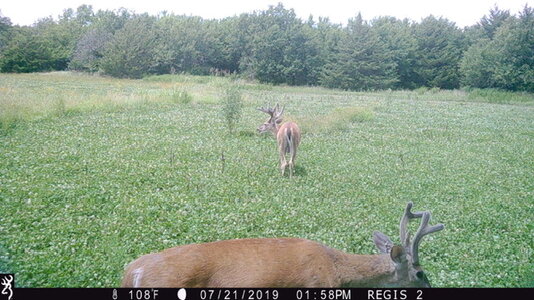You are right that timely rain covers a multitude of sins. I've been on a long-term quest to both reduce my costs, improve natural nutrient cycling in my soils, and continue to benefit deer. I don't generally have a drought issue, so not everything may apply to you, but here is my trip so far.
We started with high input traditional tillage. We had magazine cover food plots but were spending lots of time and money. As I learned about soils, my perspective changed.
My first step was to stop deep and frequent tillage. This step should apply to you as it conserves what moisture your soil has. Planting mixes and rotations of legumes and grasses, my OM and nutrient cycling returned and I stopped using fertilizer. I has been close to 10 years since I fertilized food plots. Deer usage is as good or better than ever. I began selecting complementary crops with lower fertility requirements (WR over WW for example and Sunn Hemp and buckwheat over RR corn and beans for summer).
My next step was to begin to convert many of our small kill plots to permaculture (Fruit trees). They were not primarily apple trees that need maintenance, but trees like persimmons (native here) that don't need maintenance. I planted them in small kill plots that had a clover base. I then let these plots grow up in weeds. When I start to get woody growth that is almost too big for a bushhog, I mow them back and let weeds take over again. The hope is that native weeds plus the fruit become a very low maintenance food source for deer.
I then became more weed tolerant.
I'm now beginning the journey to weed management as shown on this thread:
https://deerhunterforum.com/threads...lds-for-bigger-bucks-and-better-hunting.7125/. I will always have some food plots, but the amount of acreage is decreasing and the cost and time required has dramatically dropped.
Keep in mind that I am on a pine farm, and our management of timber is probably an even bigger contributor to deer food and cover than anything I've done under the food plotting umbrella.
Thanks,
PS One last note - Over time I've learned the more I try to reshape nature, the higher differential the cost and lower the differential gain. I'm much better off when I conform to nature and bend her slightly to favor deer. As I move into retirement, I don't ever plan to plant again without a high chance of rain in the forecast. Previously, I was working full time and had limited time to put in plots, so I forced things.
Jack


